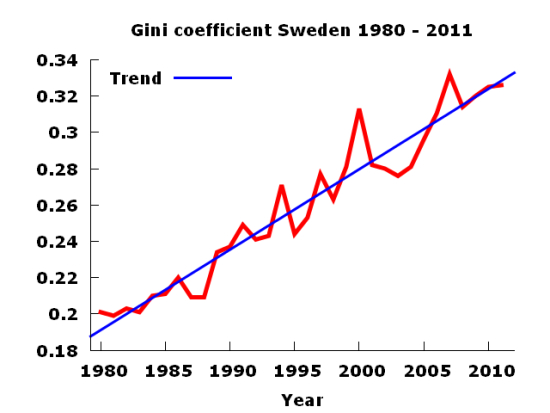By David Ruccio

"Sweden, which has long been the shining example for liberal economists of what we should be aiming for, seems to be losing its luster.
That’s because the growth in Swedish inequality between 1985 and the late 2000s was the largest among all OECD countries, increasing by one third.
Sweden has seen the steepest increase in inequality over 15 years amongst the 34 OECD nations, with disparities rising at four times the pace of the United States, the think tank said.Once the darling of the political left, heavy state control and wealth distribution through high taxes and generous benefits gave the country’s have-nots an enviable standard of living at the expense of the wealthiest members of society.Although still one of the most equal countries in the world, the last two decades have seen a marked change. Market reforms have helped the economy become one of Europe’s best performers but this has Swedes wondering if their love affair with state welfare was coming to an end.The real tipping point came in 2006 when the centre-right government swept to power, bringing an end to a Social Democratic era which stretched for most of the 20th century.Swedes had grown increasingly weary of their high taxes and with more jobs going overseas, the new government laid out a plan to fine-tune the old welfare system. It slashed income taxes, sold state assets and tried to make it pay to work.Spending on welfare benefits such as pensions, unemployment and incapacity assistance has fallen by almost a third to 13 percent of GDP from the early nineties, putting Sweden only just above the 11 percent OECD average.hAt the other end of the spectrum, tax changes and housing market reforms have made the rich richer.Since the mid-80s, income from savings, private pensions or rentals, jumped 10 percent for the richest fifth of the population while falling one percent for the poorest 20 percent."
Read the rest here.
No comments:
Post a Comment